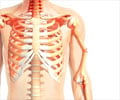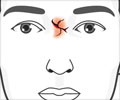Fractures are a common injury among children, yet the number of pediatric orthopedists trained to deal with the special musculoskeletal problems of children is decreasing nationwide. The management of fractures in children is usually different than in adults. Specialized knowledge and training is needed to provide the best care for these children, according to orthopedic surgeons at New York’s Hospital for Special Surgery (HSS).
Fractures in children can be caused by minor falls, such as might occur at the playground or during sports or by major traumatic events, such as car accidents. Often times fractures in children involve the area where the bone grows, called growth plates. This type of pediatric fracture can disturb the growth of bone in the future, contributing to functional limitations in standing, walking, bending, lifting, climbing stairs, and also creating disfiguring deformities.“Proper treatment of pediatric fractures is essential in helping prevent future complications and the possible need for additional treatment,” said Roger F. Widmann, M.D., chief of pediatric orthopedic surgery at HSS. “Pediatric orthopedic surgeons have the specialized training to know what type of treatment is the most viable. They are best qualified to manage pediatric fractures,” he said.
“It’s not unusual for facilities to have a general orthopedist on duty but no pediatric orthopedist available to deal with a specific pediatric musculoskeletal injury,” said David M. Scher, M.D., pediatric orthopedic surgeon at HSS. “Because of these circumstances, general orthopedists are often called upon to evaluate and treat pediatric injuries, such as fractures. We hope to help educate our general orthopedic colleagues in the surrounding communities about the state of art in treating these fractures and also make ourselves available to them to assist in caring for these children.”
Through its upcoming third annual symposium on “Operative Management of Pediatric Fractures,” scheduled for Friday, March 30, 2007, HSS is hoping to offset the shortage of pediatric orthopedists by encouraging orthopedic residents to enter the field of pediatric orthopedic surgery and updating general orthopedists about the latest surgical methods available for pediatric fracture care. The hope is that this type of training will help fill a gap that could have potential negative health outcomes for children.
As part of their commitment to the care of children with orthopedic injuries, HSS has established around-the-clock access to their pediatric experts through their Pediatric Orthopedic Urgent Care Service. “This hotline sets the standard for pediatric fracture, ambulatory, and emergent care,” said Dr. Widmann. “Our specialists are available to help coordinate a child’s care when musculoskeletal injuries occur. It’s one central number that allows anyone – pediatricians, parents or other orthopedists – to access qualified pediatric orthopedic surgeons.”
According to Dr. Widmann, parents who suspect their child is suffering from a fracture should seek out medical attention at a facility that has specialized care dedicated to children. “Such a facility will have pediatric doctors, nurses and anesthesiologists who have a special interest and experience with children,” said Dr. Widmann. “At HSS we treat orthopedic problems exclusively and have areas that are dedicated to the care of pediatric musculoskeletal problems.”
Advertisement
If a child does have a fracture, Dr. Scher recommends placing ice on the extremity and elevating it above the heart. Icing can make a great difference in the degree of swelling and can also affect the ability of a pediatric orthopedic surgeon to operate, if need be, in a timely manner.
Advertisement
To help prevent pediatric fractures parents should make sure that:
• Children are properly supervised when playing
• Appropriate protective gear, such as wrist guards, is used during activities like rollerblading
• Kids involved in athletics receive proper training and conditioning as fatigue and weakness can lead to a stumble or fall that can result in a fracture.
Source-Newswise
SRM











